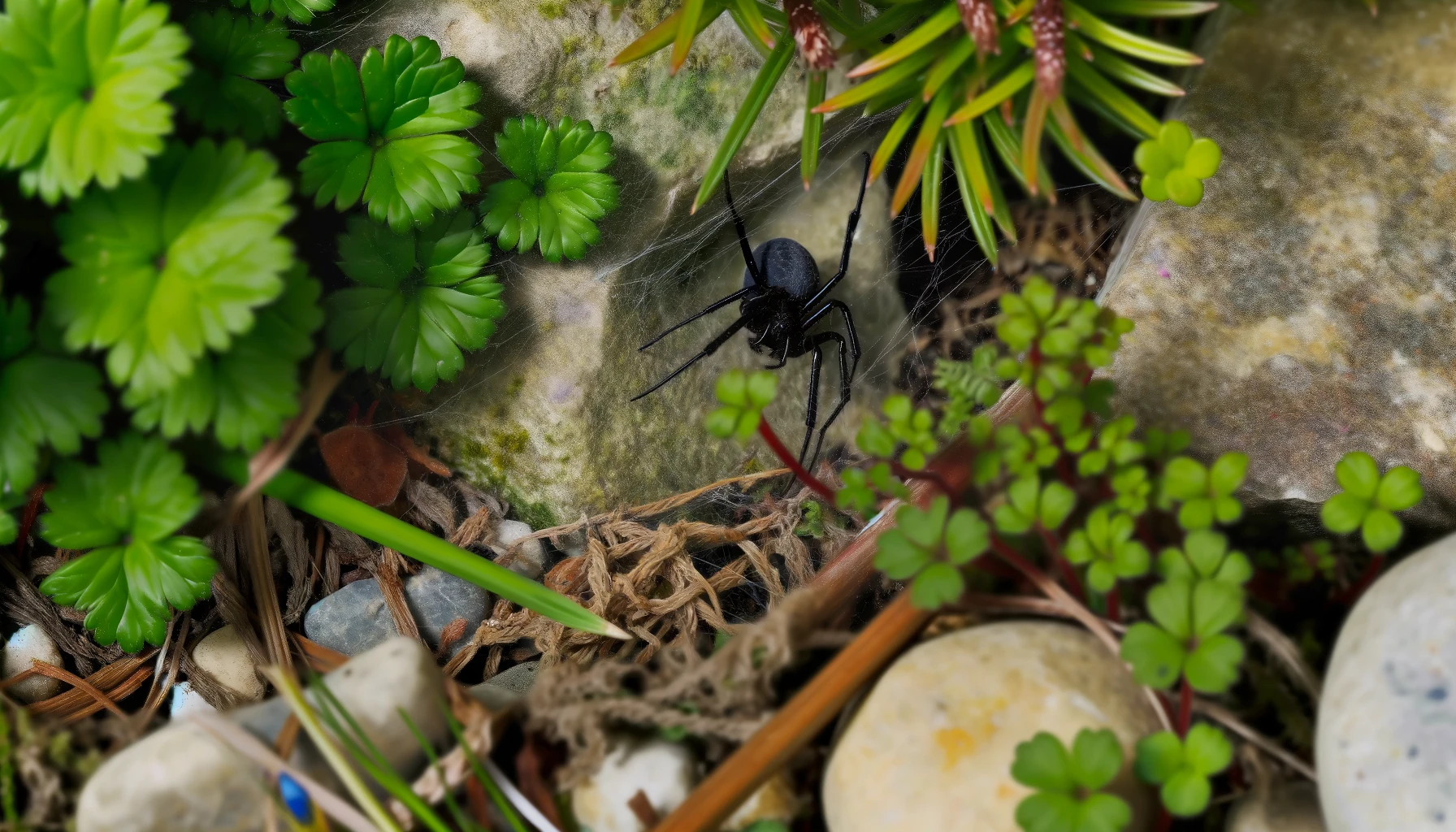The Black House Spider (Badumna insignis) is a species that evokes curiosity and, often, concern, due to its dark appearance and the commonality of its habitat in human residences. These spiders are known for their robust, velvety black or dark brown bodies and the intricate webs they weave. Understanding where they live, their behaviors, and how they interact with their environment is essential for both arachnologists and the general public.
Key Takeaways
- Black House Spiders primarily inhabit Australia and New Zealand, but they can also be found in other parts of the world due to human activity.
- They prefer dark and secluded areas, often constructing their webs in man-made structures such as window frames, sheds, and under eaves.
- Despite their menacing appearance, they are not aggressive towards humans and their bite, while venomous, is not considered dangerous.
Habitat and Distribution
The Black House Spider is predominantly found in Australia and New Zealand, thriving in both urban and rural settings. Their ability to adapt to various environments has enabled them to spread to other regions, often hitching rides in cargo and personal belongings.
Preferred Living Conditions
Black House Spiders favor locations that provide shelter and ample opportunities for catching prey. They are commonly found in:
- Corners of window frames
- Crevices in brickwork
- Under eaves and in sheds
- Inside barns and garages
Their webs are distinctive, often described as messy and funnel-shaped, designed to trap flying insects that venture too close.
Interaction with Humans
Despite their somewhat fearsome name and appearance, Black House Spiders are generally shy and avoid human interaction. The myths surrounding their danger to humans are largely unfounded. Their bite may cause discomfort but is unlikely to result in serious health issues.
Real URLs for Further Exploration
- For more information on Black House Spiders, visit the Australian Museum.
- Watch a detailed video about the life of a Black House Spider on YouTube.
Identifying a Black House Spider
Identifying a Black House Spider involves looking for several key characteristics:
- Color: Dark brown to black
- Size: Females can reach 18mm in body length, with males being smaller.
- Web: A messy, funnel-shaped web with a distinctive retreat area where the spider hides.
Understanding where Black House Spiders live and their behavior allows us to appreciate their role in the ecosystem and mitigate unwarranted fear. Their presence in our homes is more a testament to their adaptability and the shelter our buildings provide than a cause for alarm.
Managing Black House Spiders in Homes
While understanding the ecological benefits of Black House Spiders, many people prefer to keep them outside of living spaces. Here are some practical tips for managing their presence:
- Regularly clean windows, eaves, and sheds to remove webs and discourage resettling.
- Seal cracks and crevices in walls and around windows to prevent them from entering.
- Use natural repellents like peppermint oil around windows and doors.
Real URLs for Practical Advice
- Find tips and strategies for managing spiders in and around your home at PestWorld on House Spiders.
Frequently Asked Questions
Are Black House Spiders Dangerous?
Black House Spiders are often feared due to their dark appearance, but they are not considered dangerous to humans. Their bite can cause discomfort but is rarely serious.
How Can I Identify a Black House Spider?
Identify a Black House Spider by its dark color, size (with females larger than males), and the distinctive messy, funnel-shaped web with a retreat area.
Do Black House Spiders Live Alone?
Yes, Black House Spiders are solitary creatures, with each spider living and hunting alone. They only come together for mating purposes.
What Do Black House Spiders Eat?
They primarily feed on insects like flies, mosquitoes, and other small flying insects that get caught in their webs.
How Can I Prevent Black House Spiders from Entering My Home?
Prevention includes sealing entry points, keeping areas clean to discourage insect prey, and using natural repellents.

[…] the walls of Florida’s urban dwellings, black house spiders find their place. We delve into their preferred indoor habitats, exploring the intricacies of their […]
[…] spiders exhibit more diverse hunting strategies. They may actively hunt insects, using their size and speed […]
[…] night. Understand the evolutionary advantages of their behavior. Uncover the dietary preferences of Black House Spiders and how their feeding habits contribute to natural pest control. Appreciate the role they play in […]
[…] you love gets bitten. This page is to offer thorough guidance on what to do in the event of a Black House Spider bite, covering identification, what to do right away, how to monitor symptoms when to get help, and […]